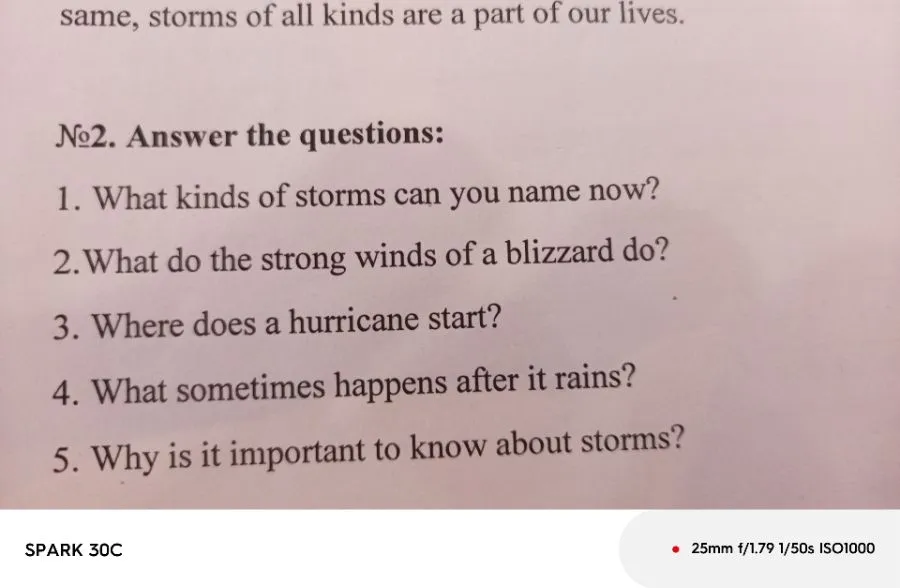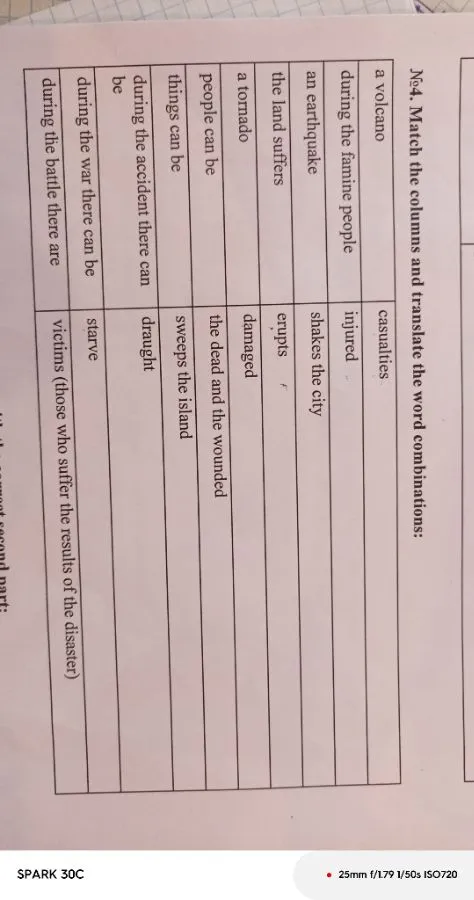My Content
Account
Catalog
System
App & Social
Our Projects
×
![]()

1. What kinds of storms can you name now? 🌪️
There are several types of storms:
- Thunderstorms ⛈️
- Blizzards ❄️
- Hurricanes 🌀
- Tornadoes 🌪️
- Dust storms 💨
- Ice storms 🧊
- Tropical storms 🌴
2. What do the strong winds of a blizzard do? ❄️
Strong blizzard winds:
- Create whiteout conditions reducing visibility
- Blow and drift snow across areas
- Can create dangerous snow banks
- May damage buildings and structures
- Can knock down trees and power lines
- Make travel extremely dangerous or impossible
3. Where does a hurricane start? 🌀
Hurricanes typically start:
- Over warm ocean waters near the equator
- Usually in tropical or subtropical regions
- Often in the Atlantic Ocean or Caribbean Sea
- Where water temperatures are at least 26.5°C (80°F)
- Over areas known as "hurricane nurseries" near Africa's west coast
4. What sometimes happens after it rains? 🌈
After rain, several things might happen:
- Rainbows appear when sunlight hits water droplets
- Puddles form on the ground
- The air feels fresh and clean
- Plants and grass look greener
- Streams and rivers might rise
- The ground becomes muddy or wet
5. Why is it important to know about storms? ⚠️
Knowing about storms is important because:
- It helps us prepare and stay safe
- We can protect our property
- We can plan outdoor activities better
- It allows us to make emergency plans
- We can help others stay informed
- It helps us understand when to seek shelter
- We can prepare emergency supplies in advance
3. Where does a hurricane start? 🌀
Let's explore in detail where and how hurricanes form:
Location Requirements:
- Hurricanes form over warm tropical oceans
- Usually between 5° and 20° latitude north or south of the equator
- The Atlantic hurricane basin is a primary formation area
Essential Conditions:
- Ocean water temperature must be at least 26.5°C (80°F)
- Low wind shear (winds moving in same direction and speed with height)
- High humidity
- Coriolis force (Earth's rotation effect)
Common Formation Regions:
- Atlantic Ocean
- Caribbean Sea
- Gulf of Mexico
- Eastern Pacific Ocean
Development Process:
- Starts as a tropical disturbance
- Develops into a tropical depression
- Strengthens to tropical storm
- Finally becomes a hurricane
African Connection:
- Many Atlantic hurricanes begin as tropical waves off Africa's west coast
- These waves move westward across the Atlantic
- Known as the "Cape Verde hurricanes"

№4. Match the column and make the word combinations:
Let's connect the words from both columns to make meaningful word combinations:


Use Homiwork as a regular app. It's convenient!
Add to Home ScreenUse Homiwork as a regular app. It's convenient! Open your Safari menu and tap 'Add to Home Screen'.


By starting to use the service, you accept: Terms of Service, Privacy Policy, Refund Policy
